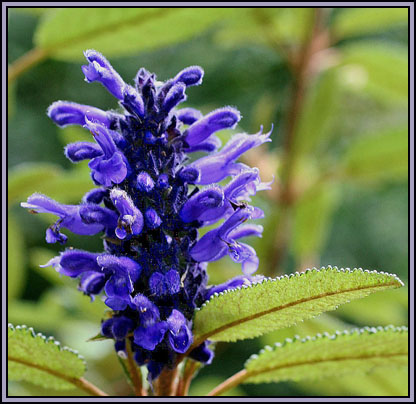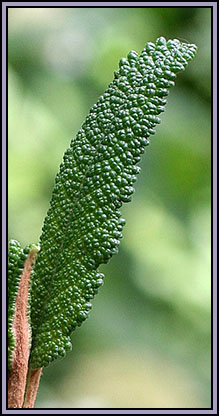|
|
|
|
| This
lovely plant was given to me by one Kay
Dunlop, who is irrefutably the doyenne
of tender Salvias in this part of the
world. I had previously been impressed
by the beautiful Salvia corrugata at
Logan Botanic Gardens and it goes
without saying that I was quite
delighted to acquire it from her.
The flower is an amazing shade of blue,
which I for one find impossible to
capture with a camera.
|
| The
foliage is also noteworthy and gives the
plant its specific epithet 'corrugata'.
The Salvia is to be found high in the
mountains of Colombia, Ecuador, and Peru
where it grows as a shrub, attaining a
height of up to three metres. In
cultivation it is usually found to be
smaller in stature. It flowers late in
the year and with me it is still busily
flowering in late October. The species
is said to withstand several degrees of
frost but it ultimately succumbs to the
cold, wet soils of winter when planted
in the open garden. |
|
 |
|
|
|
|
 |
|
 |
| I
grow it in a ridiculously small earthenware
pot in a sandy, gritty soil mixture which was
once John Innes no.3 but by now must be
totally bereft of any significant nutrient.
The pot is situated in an open sunny spot
which is probably the hottest part of the
garden in summer. |
| My theory is that the
impoverished soil and the cramped condition of
the root ball turns out to be conducive to
flowering. You could call it tough love I
suppose. |
| Nevertheless,
as a matter of insurance, it's worth taking a
few cuttings in late summer or early autumn.
They will root very easily. |
|
|
|
|
|
There
exists an intriguing account of how Salvia corrugata
came to be introduced into cultivation. In 1988 Jim
and Jenny Archibald collected an unidentifiable
Salvia during their expedition to South America.
They passed on several herbarium sheets to the
Edinburgh Botanic Gardens for determination and
these sheets were routinely freeze dried as a matter
of best practice. In 1995 the sheets were examined
by James Compton and in doing so he accidentally
dislodged several of the seeds. He decided to sow
the seeds, more in hope than in expectation. But
nevertheless some of the seeds did indeed germinate
and it is believed that nearly all existing progeny
of this species that are currently in cultivation
can be traced back to Compton's tentative
'experiment'. Its a good story and is fully
documented by Betsy Clebsch, a truly impeccable
source.
Fascinating
! |
|
|
|
|
|
Ref - The New Book of Salvias, by Betsy Clebsch,
Timber
Press 2003
|
|
|
|
|
|
|
